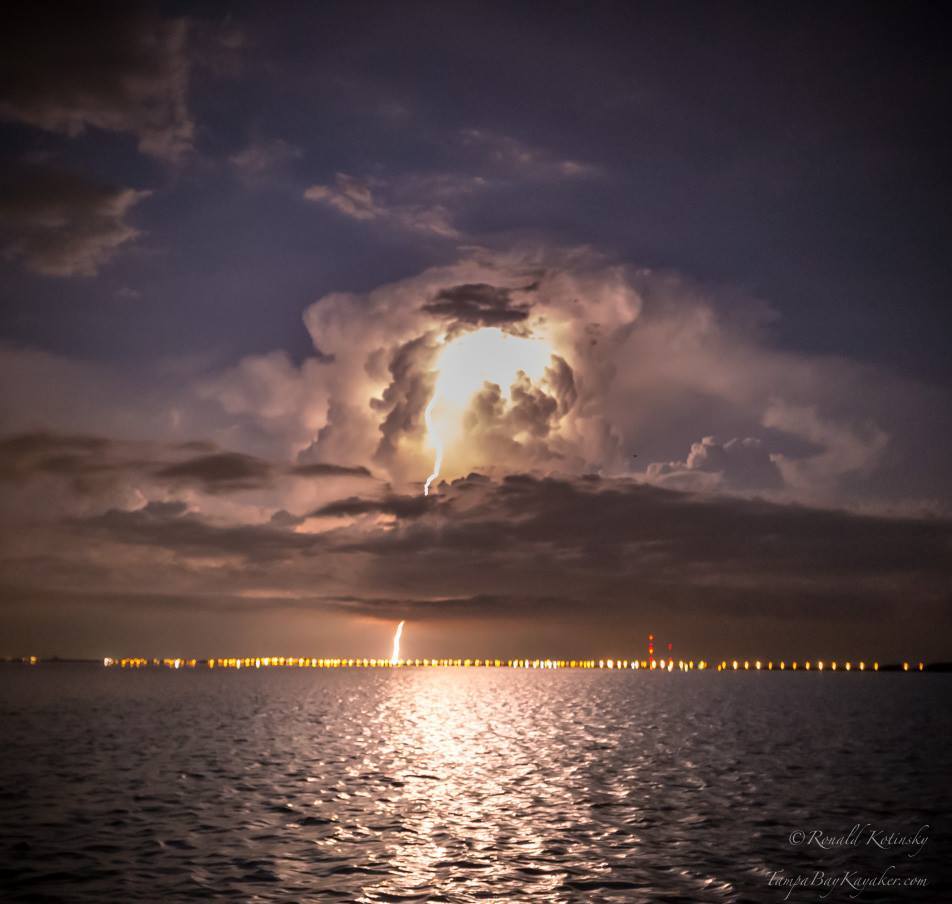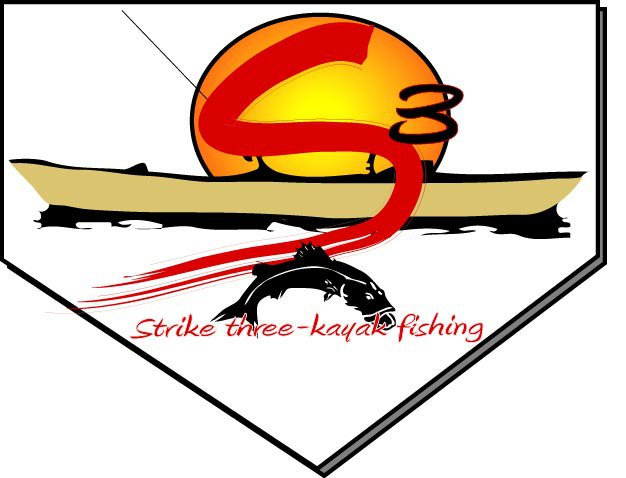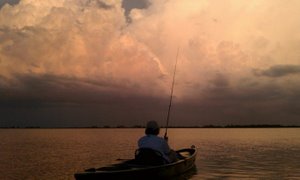It is Fall. It doesn’t take a genius to feel the “change in the air.” Air and water temperatures have dropped steadily and with that, more fishing opportunities arise. The trend in local fishing has been significant and predictable. Catches of three species have been consistent and will continue to accelerate through the start of Fall and for the upcoming months.
Comfortable days and beautiful scenery await you on the water!
Trout, redfish and flounder are prime targets for inshore anglers around the Tampa Bay area. A variation of the Inshore Slam, flounder substituted for snook, the “Texas” Slam is one that has happened on nearly every trip of late. Redfish and flounder have led the way and trout action will continue to rise as the hours of daylight continue to decline and cooler water temperatures arrive.

Redfish
A year-round favorite in the area, redfish stocks are in very good shape. September marks a time when their traveling and feeding habits accelerate. Located in packs of significant numbers of fish, they are often located on the lowest tides in specific areas with their tails waving out of the water. “Tailing” redfish can be the most difficult to catch. The scavenging redfish are usually in water that is a little deeper and are often easier to catch because their heads aren’t buried in the mud or grass. In many of these areas, wade anglers or kayakers have great access and approach these fish with a lower profile and with zero noise. The sensitivity of redfish to various noises is significant. If they become aware of your presence, your odds at catching them are poor. For the savvy angler, approaching from upwind allows for long casts to make it to the fish and better action of lures without the wind blowing sideways across their line.
One-eighth ounce jigheads and 3-inch paddletail lures such as the 12 Fathom Fat Sam Mullet are great for redfish. More the lures at the slowest speed possible but not sticking to the seagrass on the bottom. If floating weeds or thick turtle grass is present where you are fishing, try the SlamR or Buzz Tail Shad on The Edje jighead. This will keep a lure cleaner than the exposed jighead. Redfish will attack and efficiently thump a lure with a 70% hookup ratio when they are not in a “mood.
Trout
Speckled trout continue their return to prominence after years of post-red-tide recovery time. A species that spawns year-round, they have come back strong and will react very positively to the change-in-the-air. The same lures used for redfish work fine for trout. Targeting is different. Where redfish stick to the shallows, a majority of the speckled trout will be in the water that is 3 feet deep or more. The pace of the lure is similar to redfishing, but everything is done slower to keep the lure down near the bottom. The same light jighead moved at a slower pace will finesse the lure down to where the trout can stay down in their hiding places and not have to move very far to attack the lure.
For targeting trout, it is beneficial to bend down the barbs on your jigheads and helps with the release of them without excessive handling. From a kayak, the process is even easier. A trout brought up to the side of the kayak can easily be released by running your fingers down the leader line to the jighead and then backing the hook out while the fish is in the water. Take care not to get your fingers too close to the mouth of a trout. Their fang teeth will puncture a finger easily.
Areas with deeper grass and moving water are great locations to find trout. If there is also bubbled up water, that’s baitfish, a food source that will bring them to that area. Trout may hit lures multiple times before they’re hooked. With the tight line associated with moving a lure, trout will hook themselves with the right resistance placed on the fish when the strike is felt. If the fish is not hooked, pause and then restart the motion of the lure allowing the fish a “second chance” at his meal.
Flounder
Mostly ignored by area anglers, flounder were also pounded by the red tide harmful algae blooms of 2005 and 2006. Their return was much slower but 2010 saw decent numbers return and August and the start of September of this year have been excellent for catching this species. Some flounder have been caught right against the trees on the redfish outings, but for serious targeting of flounder to get into volume stick to areas with more depth, sand bottom and structure. This could be under bridges, along seawalls, around deeper oyster bars, creek mouths, Gulf passes or very deep sandy patches surrounded by seagrass.
The SlamR and the Mullet are great options for flounder. If the depth is more than 8 feet, particularly if there is also current, move up to a heavier jighead like a quarter-ounce. The lighter lure will work but the added weight of the quarter-ounce will allow you to sink your lure down faster and work more bottom. The strike of a flounder is somewhat different than other species. Often your lure will be moving along and then simply come to a dead stop. Don’t assume you have hooked bottom and lift the rod tip up high. A flounder will begin to start swimming with the lure and hopefully the hook point will find a place to stick in the flounder’s mouth. Like the trout, if the lure pops out: Pause and then go back to moving the lure slowly. A hungry flounder will act just like a trout and strike that lure multiple times.
A Game Plan- Catching all three!
Do you want to set the Texas Slam as a goal for the day? Targeting all three creates some choices. There are distinct differences in where you will find these species so what will you target first? There are a number of variables. The decision should weigh heavily on your best redfish options for the day. Flounder and trout may be caught in the same location, especially if there is good presence of baitfish and good moving water across a mix of sand and grass bottom. They are more likely to be more cooperative for a longer portion of the trip. So, in your trip planning, make sure you reserve your time for redfish at the time when you are most confident you can locate them in a feeding mode. If early morning trips are your plan, you may try a few casts around bait schools out deeper for trout and maybe even a flounder but quickly shoot in to the shallows to chase redfish. If you achieve your redfish catch, shift gears and get back out to your deeper venues and start working for the other species.
When the sun gets up higher, trout can still be caught although usually the bigger trout are feeding before it gets too late in the morning. Moving on to your flounder, consider that heavier jighead and then make a habit of fishing areas that have that sand bottom and keep that lure in contact with it. The actual capture of flounder can be frustrating. They have hard mouths and many come off during the battle, many time right next to the boat or kayak. A landing net can be used to help or just make a habit of launching these fish into your craft as quickly as possible.

Know your regulations:
Redfish: Possession limit is one fish per licensed angler, at least 18-inches and not over 27-inches. (Note: I personally do not recommend keeping a redfish under 21-inches, it is simply very little meat for a fish that is harvested)
Spotted seatrout: Possession limit is four fish per angler (South zone, five in the North or Northeast) with a slot size of “15 to 20 inches”. One of your trout in your bag limit may be over 20-inches. (Note: I personally do not recommend keeping the trout over 20-inches. They are a drum and the meat becomes more like drum meat the larger they get)
Flounder: Possession limit is ten fish per angler statewide with a minimum length of 12-inches (Note: I personally do not keep flounder that are under 14-inches for the same reason I release redfish that are 18 to 20 inches: If you fillet one out, and compare it to a larger fish, you’ll know why.)
The Change In The Air means other opportunities too! These three species, however, are providing a great amount of action and will be mainstays for months to come! Enjoy your fishing and as always: Be careful out there!
Neil Taylor
“Instructional Kayak Fishing”
www.strikethreekayakfishing.com
(Cell) 727-692-6345
LivelyBaits@aol.com
- The Neil Blog… - July 26, 2023
- The Catfish - July 26, 2023
- update - July 22, 2023











